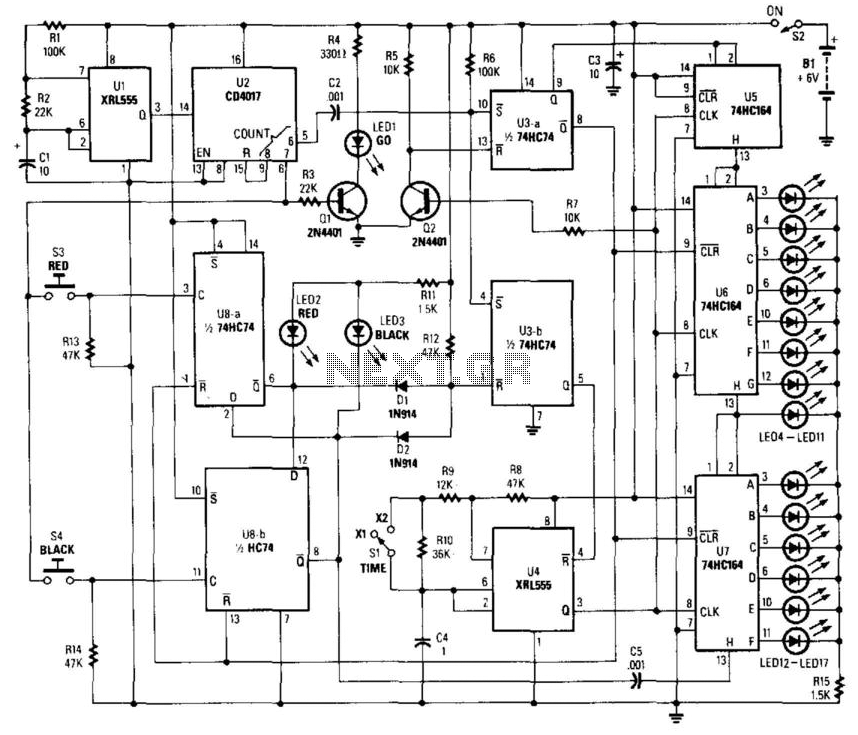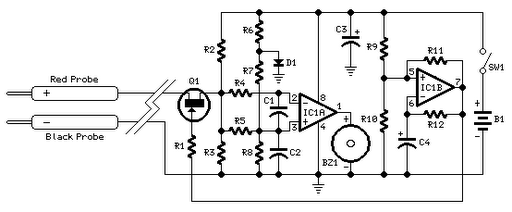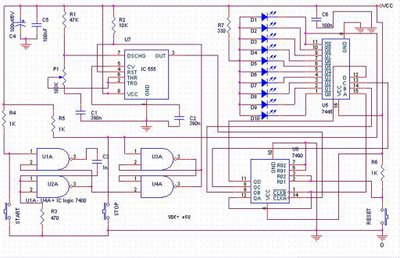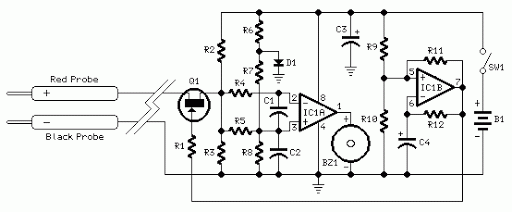
Reaction Capability TesterCircuit
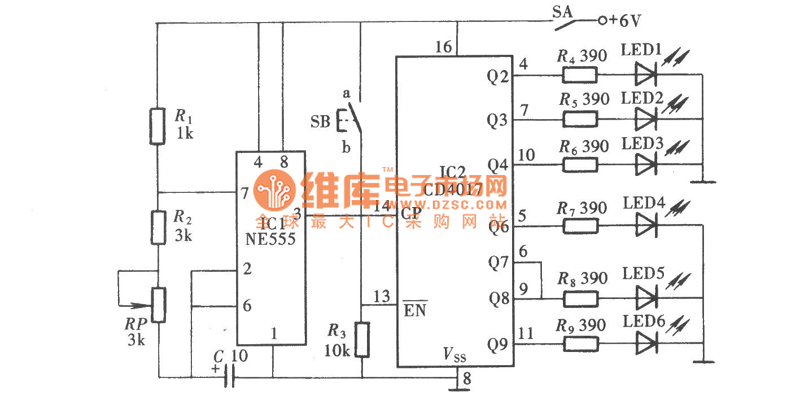
The Reaction Capability Tester is utilized to assess and enhance an individual's quick-response abilities. It features various designs, with the depicted model comprising a CD4017 decimal counter and a light-emitting diode (LED). The construction of the Reaction Capability Tester is straightforward, making it suitable as a playful tool for training and evaluating children's responsiveness.
The Reaction Capability Tester operates by measuring the time taken by a user to respond to visual stimuli, represented by the illumination of the LED. The circuit includes a CD4017 decade counter, which counts the number of times the LED is activated. Upon pressing a button or switch, the LED lights up, and the user must respond as quickly as possible. The CD4017 then registers the response time, providing feedback on the user's reaction speed.
To construct the Reaction Capability Tester, the following components are required: a CD4017 counter IC, a light-emitting diode (LED), a resistor to limit the current through the LED, a push-button switch for user interaction, and a power supply (typically a battery). The circuit can be arranged on a breadboard or a custom PCB for a more permanent solution.
The circuit design begins with connecting the power supply to the CD4017 IC, ensuring proper voltage levels are maintained. The LED is connected to one of the output pins of the CD4017, while a resistor is placed in series to prevent excess current from damaging the LED. The push-button switch is connected to the input of the circuit, triggering the LED when pressed.
In practice, the tester can be utilized in various environments, such as educational settings or recreational activities, to improve children's reaction times while providing an engaging experience. The simplicity of the design allows for easy modifications, such as changing the LED color or adjusting the timing intervals, to suit different training needs. Overall, the Reaction Capability Tester serves as an effective tool for developing quick-response skills in a fun and interactive manner.Reaction Capability Tester is used to test and train man s quick-response capability. It has various type of construction and the Reaction Capability Tester as shown in the picture is composed of decimal counter CD4017 and luminous diode. The construction of Reaction Capability Tester is simple and can be used as a plaything to train and test children s..
🔗 External reference
The Reaction Capability Tester operates by measuring the time taken by a user to respond to visual stimuli, represented by the illumination of the LED. The circuit includes a CD4017 decade counter, which counts the number of times the LED is activated. Upon pressing a button or switch, the LED lights up, and the user must respond as quickly as possible. The CD4017 then registers the response time, providing feedback on the user's reaction speed.
To construct the Reaction Capability Tester, the following components are required: a CD4017 counter IC, a light-emitting diode (LED), a resistor to limit the current through the LED, a push-button switch for user interaction, and a power supply (typically a battery). The circuit can be arranged on a breadboard or a custom PCB for a more permanent solution.
The circuit design begins with connecting the power supply to the CD4017 IC, ensuring proper voltage levels are maintained. The LED is connected to one of the output pins of the CD4017, while a resistor is placed in series to prevent excess current from damaging the LED. The push-button switch is connected to the input of the circuit, triggering the LED when pressed.
In practice, the tester can be utilized in various environments, such as educational settings or recreational activities, to improve children's reaction times while providing an engaging experience. The simplicity of the design allows for easy modifications, such as changing the LED color or adjusting the timing intervals, to suit different training needs. Overall, the Reaction Capability Tester serves as an effective tool for developing quick-response skills in a fun and interactive manner.Reaction Capability Tester is used to test and train man s quick-response capability. It has various type of construction and the Reaction Capability Tester as shown in the picture is composed of decimal counter CD4017 and luminous diode. The construction of Reaction Capability Tester is simple and can be used as a plaything to train and test children s..
🔗 External reference
